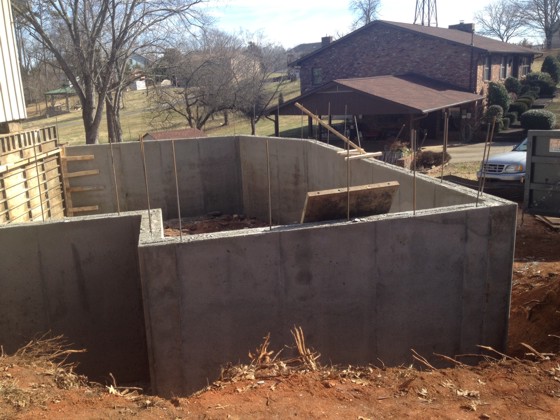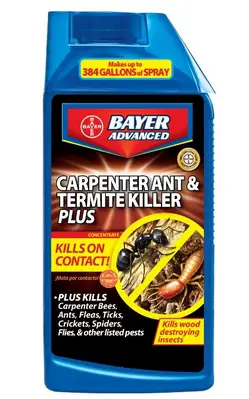Self Compacting Stone
DEAR TIM: What type of stone would be best for filling this cavity that is a planned two-car garage addition? It is approximately 7 feet deep. The local concrete supplier sells recycled concrete for a really good price. It is very similar to crusher run. Due to the design, compacting will be next to impossible. Whatever is used needs to be "self compacting". Do I have options? What else would you do to ensure the concrete slab that will be poured on top of the fill will not crack or settle? Dave L., Knoxville, TN
DEAR DAVE: I know what you're thinking. That low price on the recycled concrete is whispering in your ear. It's a great product for many things, but based on your photo and description, I'd not use it.
I can't count how many jobs I did that are nearly identical to yours. Not only did I build custom homes that had attached garages that needed fill around the foundations and under the slabs, but I also built garage additions very similar to yours. Because I'd had to go in and repair many a sunken garage slab put in by some builder or remodeler cutting corners, I quickly realized that garage slabs can and will fail horribly if you don't put in solid, compacted fill under them.

The entire hollow spot created by the foundation addition needs to be filled with something so the concrete slab to be poured on it will not settle. Photo credit: Dave Lich
Because I never wanted to take chances hoping I had reached full compaction, I always decided to use a special gravel we were lucky to have in the Midwest. You should have this too in your city. We called it washed pea gravel. The stones were rounded and they were the size of fat green peas. They looked much like round and oblong ball bearings.
If you filled a five-gallon bucket with this gravel, believe me you couldn't compact it any more than you did by filling the bucket. You can't get the same result using the recycled concrete because there's too much friction between the sand and angular crushed stones in the recycled mix.
The recycled concrete does compact very well using rollers or plate compactors, but as you said, that's very tough to do in your case. To get full compaction, you need to do it in lifts where the material being compacted is not much more than 4 inches thick. This is very time consuming.
If you're lucky, you may find a gravel company that has special dump trucks outfitted with conveyor belt delivery systems. This tool on the end of the truck is hydraulically controlled and swings side to side and up and down much like the digging arm of a backhoe. The truck driver can shoot tons of this pea gravel into your foundation in minutes saving you hours of back-breaking labor shoveling and hauling.
As for other options, I'd simply ask the local gravel companies what other products they may have that are truly self-compacting. Beware of any products containing sand, as the sand requires compaction. It adds lots of friction to the material.
You can test this with ease when you shovel sand or dump it. With little effort it will compact. So just filling your giant foundation hole with sand is not an answer as it will compact at some point on it's own or with considerable effort on your part.
 Here's a few other things I would do to ensure you end up with a fantastic job. For starters, I'd be sure to pretreat the soil inside this foundation for termites. Remember, there are two houses: those that have been attacked by termites and those that will be.
Here's a few other things I would do to ensure you end up with a fantastic job. For starters, I'd be sure to pretreat the soil inside this foundation for termites. Remember, there are two houses: those that have been attacked by termites and those that will be.
I'd also be sure to damproof the foundation wall on your home where this addition is connected. You don't want any water vapor that's going to rise from the soil in this new garage addition to make it's way into your home.
I'd put a great cross-laminated vapor barrier on top of the gravel before you pour the slab in the garage. This will keep water vapor from rusting tools and causing havoc in the garage in the winter months.
Because it's going to have cars and perhaps a pickup truck on it, I'd make sure the concrete slab had number 4 steel bars, commonly called one-half-inch rebar, installed at 2-foot centers in both directions. It would resemble a giant piece of graph paper. This steel should end up in the middle of the concrete.
This steel will keep shrinkage cracks very small. It will ensure the slab will not separate with one part being higher or lower than another part. Steel is concrete's best friend as it add enormous tensile strength to concrete slabs.
If your building code permits it, be sure to include floor drains in your garage. Old homes had these and the slab sloped towards the center of the garage. Newer building codes tend to favor slabs sloping towards the garage door.
All the code officials that voted for this obviously have never parked a car or truck that's been on snowy roads inside their garage. They'd discover the next day their garage door rubber seal is frozen to the slab!
Column 1077
One Response to Self Compacting Stone